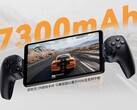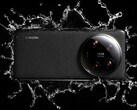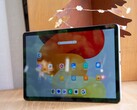
Xiaomi Redmi Pad SE 8.7 tablet review – As compact as an iPad mini but significantly cheaper
Fits everywhere.
You can already get the Xiaomi Redmi Pad SE 8.7 on the internet for around $100. Does a handy tablet priced this low provide both smooth operation and video streaming? Our review reveals whether we are getting a bargain or the low performance will become an issue.Florian Schmitt, 👁 Florian Schmitt (translated by Andrew Dickson) Published 🇩🇪 🇫🇷 ...
Xiaomi Redmi Pad SE 8.7 verdict
With the Xiaomi Redmi Pad SE 8.7, the manufacturer has brought a handy tablet to the marketplace that is easy to transport and yet offers significantly more screen real estate than a smartphone. The screen itself can get quite bright and doesn't suffer from PWM flickering, but the low resolution does not provide particularly sharp images.
On the one hand, the processor offers a little more power than is normally the case in this very affordable price range, but on the other hand, it cannot completely prevent stuttering performance and longer loading times. You will also have to settle for compromises when it comes to the fairly straightforward camera system.
We like the promise of 3 years of updates, however, further efforts to make the tablet suitable for long-term use and to use sustainable materials are hardly noticeable.
For under $100, you get a lot with the Xiaomi Redmi Pad SE 8.7: a 90 Hz display or an infrared blaster so that you can use the tablet as a TV remote control. There is also very long battery life and even a 4G module if that's in your sights.
Of course, with high-class devices like the iPad Mini, the Xiaomi Redmi Pad SE 8.7 is unable to keep up in terms of performance or case quality. But if you don't wish to part with so much money, Xiaomi has a lot to offer.
Pros
Cons
Price and availability
At the time of our review, some retailers are offering the Xiaomi Redmi Pad SE 8.7 for around £119 - even the manufacturer itself (current UK price), for example.
Possible alternatives compared
Image | Model / Review | Price | Weight | Drive | Display |
|---|---|---|---|---|---|
| Xiaomi Redmi Pad SE 8.7 inches Mediatek Helio G85 ⎘ ARM Mali-G52 MP2 ⎘ 4 GB Memory, 64 GB eMMC | Amazon: List Price: 150€ | 373 g | 64 GB eMMC Flash | 8.70" 1340x800 179 PPI IPS | |
| Amazon Fire HD 8 2022 MediaTek MT8169A ⎘ ARM Mali-G52 MP2 ⎘ 2 GB Memory, 32 GB eMMC | Amazon: $149.99 List Price: 115€ | 337 g | 32 GB eMMC Flash | 8.00" 1280x800 189 PPI LCD | |
| Samsung Galaxy Tab A9 Mediatek Helio G99 ⎘ ARM Mali-G57 MP2 ⎘ 4 GB Memory, 64 GB UFS 2.1 | Amazon: $115.99 List Price: 179€ | 332 g | 64 GB UFS 2.2 Flash | 8.70" 1340x800 179 PPI LCD TFT | |
| Lenovo Tab M9 Mediatek Helio G80 ⎘ ARM Mali-G52 MP2 ⎘ 3 GB Memory, 32 GB eMMC | Amazon: $109.99 List Price: 160€ | 344 g | 32 GB eMMC Flash | 9.00" 1340x800 173 PPI IPS | |
| Nokia T10 Unisoc T7200 (T606) ⎘ ARM Mali-G57 MP1 ⎘ 3 GB Memory, 32 GB eMMC | Amazon: $149.99 List Price: 169€ | 375 g | 32 GB eMMC Flash | 8.00" 1280x800 189 PPI IPS |
Table of Contents
- Xiaomi Redmi Pad SE 8.7 verdict
- Specifications
- Case – A lot of plastic and weight
- Features – Two storage variants and, if required, LTE
- Software – That even comes with update promises
- Communication and GNSS – WiFi 5 on board
- Cameras – Best suited for snapshots
- Accessories and warranty – The Redmi Pad SE 8.7 comes without a charger
- Input devices & operation – No fingerprint sensor
- Display – It gets quite bright
- Performance – A good choice of processor
- Games – Not a true gamer
- Emissions – Heat isn't a problem
- Battery life – The Redmi Pad SE 8.7 has endless stamina
- Notebookcheck overall rating
We have already reviewed the larger Xiaomi Redmi Pad SE and now it's the turn of the more portable 8.7-inch variant. At that time, we were able to confirm that the bigger brother had a great price-performance ratio but Pad SE 8.7 is significantly cheaper.
Xiaomi has never offered such a handy tablet up to now, but the success of the Apple iPad Mini has already inspired several manufacturers to bring smaller models back onto the market. On request, the compact Xiaomi tablet is also available with 4G, making it an exciting device, especially for those on a tight budget.
Specifications
Case – A lot of plastic and weight
The Xiaomi Redmi Pad SE 8.7's chassis is made largely of plastic and is available from the manufacturer in Europe in two colors, namely gray and light blue. Internationally, it is also available in light green.
The tablet is cleanly manufactured, and material transitions are barely noticeable. However, the case is not completely pressure-resistant with even moderate touches leading to distortions in the screen's liquid crystals.
At 373 grams, the tablet is averagely heavy for its size. If an even lighter device is your thing, you'll get your money's worth with the Samsung Galaxy Tab A9. The screen bezels on the front are not too thick and give the tablet a modern look. However, you can still hold it comfortably in your hand without accidentally operating the touchscreen.
Features – Two storage variants and, if required, LTE
Customers can get the Redmi Pad SE 8.7 in two storage variants:
4 GB RAM / 64 GB of mass storage: $150
4 GB RAM / 128 GB of mass storage: $170
However, the price has already dropped significantly both on the internet and from the manufacturer itself, and you can sometimes even get the device for around $100. Because of the small additional cost, we would definitely recommend the larger storage variant: the 64 GB version can get filled very quickly after installing a few apps and recording some videos.
There is also an option with a 4G modem and dual SIM, but the SoC remains the same. The price increase from the manufacturer is $30. Our review model is the Wi-Fi variant.
NFC for mobile payment transactions is not on board, but there is an infrared transmitter so that you can operate a television with the device.
The USB-C port is only connected internally at USB 2.0 speed, which means data transfers take a while and image output via the USB-C port is not possible. However, you can transfer images wirelessly to a Wi-Fi-enabled screen.
microSD card reader
The microSD reader is a separate item, so the 4G version of the Redmi Pad SE 8.7 also allows for dual SIM operation with a memory card inserted at the same time.
In terms of speed, the reader does a decent job compared to other cheap and compact tablets. However, if you look at our reference micro SD card's (the Angelbird V60) maximum possible transfer speeds, it becomes clear that the card reader does not even come close to making use of them.
| SD Card Reader - average JPG Copy Test (av. of 3 runs) | |
| Samsung Galaxy Tab A9 (Angelbird AV Pro V60) | |
| Average of class Tablet (10.2 - 57.4, n=51, last 2 years) | |
| Xiaomi Redmi Pad SE 8.7 inches (Angelbird V60) | |
| Nokia T10 (Angelbird V60) | |
| Amazon Fire HD 8 2022 (Angelbird V60) | |
| Lenovo Tab M9 (Angelbird V60) | |
Cross Platform Disk Test (CPDT)
Software – That even comes with update promises
Xiaomi's inexpensive and handy little tablet has Android 14 providing the basis for HyperOS 1.0.4, Xiaomi's in-house operating system. This comes at the cost of bloatware, i.e. pre-installed third-party apps, but these can be easily deleted.
The Xiaomi Redmi Pad SE 8.7 bears the "Android Enterprise Recommended" seal, which means that Xiaomi is committed to installing a security update every 90 days at the latest. This should happen through to August 2027, in other words, for 3 years from the launch of the device. New Android versions should be available up to Android 16.
This means Xiaomi is offering a decent update supply for such an inexpensive tablet with other providers sometimes making no promises at all in this price range. Samsung, on the other hand, shows that even longer updates are possible.
Sustainability
A basic update supply for the next few years is therefore guaranteed.
There is no information regarding the materials used for the product, and Xiaomi does not seem to pay much attention to sustainability when it comes to packaging: it is neither plastic-free nor has petroleum-free printing ink been used. There is no analysis of CO2 consumption over the life cycle of the product, and the information concerning sustainability in Xiaomi's latest ESG report is of a more general nature.
The power consumption is comparatively low. However, Xiaomi's efforts to protect the environment, at least with this product, are not very credible overall.
Communication and GNSS – WiFi 5 on board
The fastest Wi-Fi standard is WiFi 5. We tested the data transfer speeds with our reference router, the Asus ROG Rapture AXE 11000.
We were able to determine speeds of around 369 Mbit/s in the receiving direction, and this is roughly on par with comparable tablets. The transmission is also quite stable in terms of data speeds. In the send direction, however, there are occasional drops to under 200 Mbit/s.
As already mentioned, a 4G module is only available in a slightly more expensive version of the Xiaomi Redmi Pad SE 8.7. A GNSS module for satellite positioning has also been installed. With our review device, it is only possible to rely on approximate positioning via known Wi-Fi networks, so navigation while on the go is not possible.
Cameras – Best suited for snapshots
The portable Xiaomi pad is definitely not a photo expert and you will have to make do with a fairly simple 8-megapixel camera on the rear. In good light, it takes usable snapshots, which are, for example, sufficient for documenting a situation. However, for really high-quality shots, it falls short in terms of detail reproduction and general image sharpness.
In low light and high contrast, we miss good dynamic range in very bright and dark areas this is an area in which detail reproduction is also rather mediocre.
The test chart in the photo studio under full lighting is quite blurry when using the review device camera. At 1 lux illumination, nothing can be seen in the images.
Videos can be recorded with the main camera at a maximum of 1080p and 30fps. However, the autofocus is very slow and the dynamic range in areas that are not quite perfectly lit also leaves something to be desired.
There is also a 5-megapixel camera on the front for selfies. Photos turn out quite well, a bright background is still recognizable and does not overexpose greatly. However, when magnified, hardly any details are visible, so it is better to view the images in a smaller format.
Image comparison
Choose a scene and navigate within the first image. One click changes the position on touchscreens. One click on the zoomed-in image opens the original in a new window. The first image shows the scaled photograph of the test device.
Main camera plantMain camera environmentMain camera low light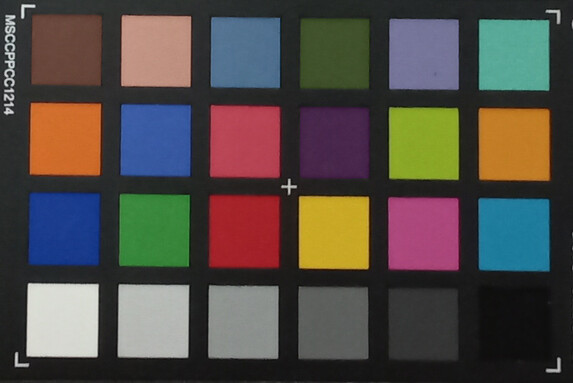

Accessories and warranty – The Redmi Pad SE 8.7 comes without a charger
The Redmi Pad SE 8.7 does not come with a charger, just a USB cable and a SIM tool. A special cover with a wrist strap is also available to buy on Xiaomi's website, for which the manufacturer charges $10 at the time of review.
The manufacturer offers a 24-month warranty on its tablets purchased in Europe.
Input devices & operation – No fingerprint sensor
The tablet provides an 8.7-inch touchscreen with a refresh rate of up to 90 Hz. Menus can often be scrolled smoothly, but there are also waiting times and stuttering in some places, mainly due to the slow SoC and the sluggish mass storage.
The Xiaomi Redmi Pad SE 8.7 does not have a fingerprint sensor. However, you can use the front camera for facial recognition. This unlocks the tablet quite reliably and quickly. Even in darker areas, the screen light is usually sufficient for recognition. However, this method is much more easily manipulated than fingerprint recognition.
The physical buttons on the right side of the case are easy to find and operate. However, they do not react to changes in the position of the tablet, so the upper part of the volume rocker always increases the volume, even if the tablet is held the other way around.
Display – It gets quite bright
The Xiaomi Redmi Pad SE 8.7 possesses an IPS display with a frame rate of up to 90 Hz. At 1,340 x 800 pixels, the resolution is rather low meaning slight jagged edges and blurring are visible, especially in text.
Xiaomi specifies a maximum display brightness of around 500 cd/m², and we achieved this value quite accurately in our tests using the spectrophotometer. In outdoor mode - which can be activated via the settings - up to 600 cd/m² is possible, but it leads to the device heating up noticeably and using up a lot of battery. For this reason, we wouldn't recommend using it for long periods.
We achieved the best color representation in "Standard" mode, where only a very slight blue tint was visible in the grayscale. Colors tend to appear a little too dark, especially strong brown and blue tones.
| |||||||||||||||||||||||||
Brightness Distribution: 90 %
Center on Battery: 499 cd/m²
Contrast: 1349:1 (Black: 0.37 cd/m²)
ΔE ColorChecker Calman: 3.68 | ∀{0.5-29.43 Ø4.78}
ΔE Greyscale Calman: 1.9 | ∀{0.09-98 Ø5}
82.8% sRGB (Calman 2D)
Gamma: 2.184
CCT: 6787 K
| Xiaomi Redmi Pad SE 8.7 inches IPS, 1340x800, 8.7" | Amazon Fire HD 8 2022 LCD, 1280x800, 8" | Samsung Galaxy Tab A9 LCD TFT, 1340x800, 8.7" | Lenovo Tab M9 IPS, 1340x800, 9" | Nokia T10 IPS, 1280x800, 8" | |
|---|---|---|---|---|---|
| Screen | -24% | -40% | -13% | -52% | |
| Brightness middle (cd/m²) | 499 | 388 -22% | 486 -3% | 405 -19% | 446 -11% |
| Brightness (cd/m²) | 479 | 364 -24% | 462 -4% | 368 -23% | 429 -10% |
| Brightness Distribution (%) | 90 | 90 0% | 92 2% | 83 -8% | 94 4% |
| Black Level * (cd/m²) | 0.37 | 0.36 3% | 0.35 5% | 0.17 54% | 0.65 -76% |
| Contrast (:1) | 1349 | 1078 -20% | 1389 3% | 2382 77% | 686 -49% |
| Colorchecker dE 2000 * | 3.68 | 4.38 -19% | 6.2 -68% | 5.15 -40% | 4.87 -32% |
| Colorchecker dE 2000 max. * | 6.82 | 10.7 -57% | 10.4 -52% | 10.12 -48% | 9.85 -44% |
| Greyscale dE 2000 * | 1.9 | 2.9 -53% | 5.7 -200% | 3.7 -95% | 5.7 -200% |
| Gamma | 2.184 101% | 2.232 99% | 2.12 104% | 2.287 96% | 2.189 101% |
| CCT | 6787 96% | 6221 104% | 7911 82% | 7379 88% | 7781 84% |
* ... smaller is better
Screen Flickering / PWM (Pulse-Width Modulation)
| Screen flickering / PWM not detected | |||
In comparison: 53 % of all tested devices do not use PWM to dim the display. If PWM was detected, an average of 8111 (minimum: 5 - maximum: 343500) Hz was measured. | |||
Display Response Times
| ↔ Response Time Black to White | ||
|---|---|---|
| 37.1 ms ... rise ↗ and fall ↘ combined | ↗ 14.4 ms rise | |
| ↘ 22.7 ms fall | ||
| The screen shows slow response rates in our tests and will be unsatisfactory for gamers. In comparison, all tested devices range from 0.1 (minimum) to 240 (maximum) ms. » 95 % of all devices are better. This means that the measured response time is worse than the average of all tested devices (20.2 ms). | ||
| ↔ Response Time 50% Grey to 80% Grey | ||
| 48.5 ms ... rise ↗ and fall ↘ combined | ↗ 25.2 ms rise | |
| ↘ 23.3 ms fall | ||
| The screen shows slow response rates in our tests and will be unsatisfactory for gamers. In comparison, all tested devices range from 0.165 (minimum) to 636 (maximum) ms. » 84 % of all devices are better. This means that the measured response time is worse than the average of all tested devices (31.6 ms). | ||
Outdoors, the Xiaomi Redmi Pad SE 8.7's screen performs quite well on days that are not too sunny. However, direct light shining on the screen creates pronounced reflections. This means that the device is probably best used in shaded areas in summer.
Even when viewed from very wide angles, the screen content can still be seen clearly. However, slight shadows are visible on the sides.
Performance – A good choice of processor
For its SoC, the Xiaomi tablet uses the MediaTek Helio G85. It is a solid choice for a cheap tablet, but doesn't always manage to navigate through menus entirely smoothly. Especially after restarting the system, it takes a few minutes before commands are processed reasonably quickly.
Playback of 1,440p YouTube videos is anything but smooth. All resolutions below this, including 1080p at 60fps, run smoothly.
In the system and processor benchmarks, the Redmi Pad SE 8.7 is quite powerful for its price bracket and is only beaten by the Samsung Galaxy Tab A9. However, you should not expect high-level performance when it comes to AI calculations.
| UL Procyon AI Inference for Android - Overall Score NNAPI | |
| Average of class Tablet (2597 - 76852, n=63, last 2 years) | |
| Samsung Galaxy Tab A9 | |
| Average Mediatek Helio G85 (3849 - 5112, n=5) | |
| Lenovo Tab M9 | |
| Xiaomi Redmi Pad SE 8.7 inches | |
| Amazon Fire HD 8 2022 | |
The graphics benchmarks highlight that smooth playback using the integrated graphics chip is a struggle when it comes to rendered content - also at 1,080p. Even in the screen's native resolution, the content should not contain too many modern graphic effects to ensure a smooth frame rate.
GFXBench (DX / GLBenchmark) 2.7: T-Rex Onscreen | 1920x1080 T-Rex Offscreen
GFXBench 3.0: on screen Manhattan Onscreen OGL | 1920x1080 1080p Manhattan Offscreen
GFXBench 3.1: on screen Manhattan ES 3.1 Onscreen | 1920x1080 Manhattan ES 3.1 Offscreen
GFXBench: on screen Car Chase Onscreen | 1920x1080 Car Chase Offscreen | on screen Aztec Ruins High Tier Onscreen | 2560x1440 Aztec Ruins High Tier Offscreen | on screen Aztec Ruins Normal Tier Onscreen | 1920x1080 Aztec Ruins Normal Tier Offscreen | 3840x2160 4K Aztec Ruins High Tier Offscreen
| 3DMark / Wild Life Extreme Unlimited | |
| Samsung Galaxy Tab A9 | |
| Lenovo Tab M9 | |
| Xiaomi Redmi Pad SE 8.7 inches | |
| Nokia T10 | |
| 3DMark / Wild Life Extreme | |
| Samsung Galaxy Tab A9 | |
| Xiaomi Redmi Pad SE 8.7 inches | |
| Lenovo Tab M9 | |
| Nokia T10 | |
| 3DMark / Wild Life Unlimited Score | |
| Samsung Galaxy Tab A9 | |
| Lenovo Tab M9 | |
| Xiaomi Redmi Pad SE 8.7 inches | |
| Nokia T10 | |
| 3DMark / Wild Life Score | |
| Samsung Galaxy Tab A9 | |
| Xiaomi Redmi Pad SE 8.7 inches | |
| Lenovo Tab M9 | |
| Nokia T10 | |
| Amazon Fire HD 8 2022 | |
| GFXBench (DX / GLBenchmark) 2.7 / T-Rex Onscreen | |
| Samsung Galaxy Tab A9 | |
| Lenovo Tab M9 | |
| Xiaomi Redmi Pad SE 8.7 inches | |
| Amazon Fire HD 8 2022 | |
| GFXBench (DX / GLBenchmark) 2.7 / T-Rex Offscreen | |
| Samsung Galaxy Tab A9 | |
| Lenovo Tab M9 | |
| Xiaomi Redmi Pad SE 8.7 inches | |
| Amazon Fire HD 8 2022 | |
| GFXBench 3.0 / Manhattan Onscreen OGL | |
| Samsung Galaxy Tab A9 | |
| Lenovo Tab M9 | |
| Xiaomi Redmi Pad SE 8.7 inches | |
| Amazon Fire HD 8 2022 | |
| GFXBench 3.0 / 1080p Manhattan Offscreen | |
| Samsung Galaxy Tab A9 | |
| Lenovo Tab M9 | |
| Xiaomi Redmi Pad SE 8.7 inches | |
| Amazon Fire HD 8 2022 | |
| GFXBench 3.1 / Manhattan ES 3.1 Onscreen | |
| Samsung Galaxy Tab A9 | |
| Lenovo Tab M9 | |
| Xiaomi Redmi Pad SE 8.7 inches | |
| Amazon Fire HD 8 2022 | |
| GFXBench 3.1 / Manhattan ES 3.1 Offscreen | |
| Samsung Galaxy Tab A9 | |
| Lenovo Tab M9 | |
| Xiaomi Redmi Pad SE 8.7 inches | |
| Amazon Fire HD 8 2022 | |
| GFXBench / Car Chase Onscreen | |
| Samsung Galaxy Tab A9 | |
| Lenovo Tab M9 | |
| Xiaomi Redmi Pad SE 8.7 inches | |
| Amazon Fire HD 8 2022 | |
| GFXBench / Car Chase Offscreen | |
| Samsung Galaxy Tab A9 | |
| Xiaomi Redmi Pad SE 8.7 inches | |
| Lenovo Tab M9 | |
| Amazon Fire HD 8 2022 | |
| GFXBench / Aztec Ruins High Tier Onscreen | |
| Samsung Galaxy Tab A9 | |
| Lenovo Tab M9 | |
| Xiaomi Redmi Pad SE 8.7 inches | |
| Nokia T10 | |
| Amazon Fire HD 8 2022 | |
| GFXBench / Aztec Ruins High Tier Offscreen | |
| Samsung Galaxy Tab A9 | |
| Amazon Fire HD 8 2022 | |
| Xiaomi Redmi Pad SE 8.7 inches | |
| Lenovo Tab M9 | |
| Nokia T10 | |
| GFXBench / Aztec Ruins Normal Tier Onscreen | |
| Samsung Galaxy Tab A9 | |
| Amazon Fire HD 8 2022 | |
| Lenovo Tab M9 | |
| Nokia T10 | |
| Xiaomi Redmi Pad SE 8.7 inches | |
| GFXBench / Aztec Ruins Normal Tier Offscreen | |
| Samsung Galaxy Tab A9 | |
| Xiaomi Redmi Pad SE 8.7 inches | |
| Lenovo Tab M9 | |
| Amazon Fire HD 8 2022 | |
| Nokia T10 | |
| GFXBench / 4K Aztec Ruins High Tier Offscreen | |
| Samsung Galaxy Tab A9 | |
| Lenovo Tab M9 | |
| Xiaomi Redmi Pad SE 8.7 inches | |
| Nokia T10 | |
On large websites, you often have to wait a while until all the content has been loaded. Even after a loading time of 10 seconds, you can still come across images that are loading when scrolling. For such an inexpensive tablet, the browser performance is quite good and it is a bit faster than most comparable devices.
| Jetstream 2 - 2.0 Total Score | |
| Average of class Tablet (22.3 - 395, n=68, last 2 years) | |
| Samsung Galaxy Tab A9 (Chrome 212) | |
| Xiaomi Redmi Pad SE 8.7 inches (Chrome 131) | |
| Average Mediatek Helio G85 (29.2 - 61.3, n=8) | |
| Lenovo Tab M9 (Chrome 110) | |
| Amazon Fire HD 8 2022 (Silk Browser 106) | |
| Speedometer 2.0 - Result 2.0 | |
| Average of class Tablet (2.59 - 790, n=56, last 2 years) | |
| Samsung Galaxy Tab A9 (Chrome 212) | |
| Xiaomi Redmi Pad SE 8.7 inches (Chrome 131) | |
| Average Mediatek Helio G85 (27 - 48.6, n=7) | |
| Lenovo Tab M9 (Chome 110) | |
| Amazon Fire HD 8 2022 (Silk Browser 106) | |
| Speedometer 3 - Score 3.0 | |
| Average of class Tablet (1.25 - 49.1, n=64, last 2 years) | |
| Average Mediatek Helio G85 (3.01 - 3.81, n=3) | |
| Xiaomi Redmi Pad SE 8.7 inches (Chrome 131) | |
| WebXPRT 4 - Overall | |
| Average of class Tablet (26 - 376, n=72, last 2 years) | |
| Samsung Galaxy Tab A9 (Chrome 212) | |
| Xiaomi Redmi Pad SE 8.7 inches (Chrome 131) | |
| Average Mediatek Helio G85 (51 - 62, n=4) | |
| Lenovo Tab M9 (Chrome 110) | |
| Amazon Fire HD 8 2022 (Silk Browser 106) | |
| Octane V2 - Total Score | |
| Average of class Tablet (763 - 138481, n=96, last 2 years) | |
| Samsung Galaxy Tab A9 (Chrome 212) | |
| Xiaomi Redmi Pad SE 8.7 inches (Chrome 131) | |
| Average Mediatek Helio G85 (10299 - 16763, n=16) | |
| Lenovo Tab M9 (Chrome 110) | |
| Nokia T10 (Chrome 109) | |
| Amazon Fire HD 8 2022 (Silk Browser 106) | |
| Mozilla Kraken 1.1 - Total | |
| Amazon Fire HD 8 2022 (Silk Browser 106) | |
| Lenovo Tab M9 (Chrome 110) | |
| Average Mediatek Helio G85 (2486 - 3939, n=9) | |
| Xiaomi Redmi Pad SE 8.7 inches (Chrome 131) | |
| Average of class Tablet (243 - 27101, n=81, last 2 years) | |
| Samsung Galaxy Tab A9 (Chrome 212) | |
* ... smaller is better
Unfortunately, slow eMMC flash is usually part of the equipment found in cheap tablets, and this is true of the Xiaomi Redmi Pad SE 8.7. This means that data cannot be transferred as quickly, and loading times are noticeably longer. The Samsung Galaxy Tab A9 showed us this doesn't have to be the case.
| Xiaomi Redmi Pad SE 8.7 inches | Amazon Fire HD 8 2022 | Samsung Galaxy Tab A9 | Lenovo Tab M9 | Nokia T10 | Average 64 GB eMMC Flash | Average of class Tablet | |
|---|---|---|---|---|---|---|---|
| AndroBench 3-5 | -46% | 120% | 2% | -12% | -28% | 351% | |
| Sequential Read 256KB (MB/s) | 289 | 270.37 -6% | 916.45 217% | 274.3 -5% | 273.5 -5% | 277 ? -4% | 1786 ? 518% |
| Sequential Write 256KB (MB/s) | 263.6 | 113.44 -57% | 398.32 51% | 184.4 -30% | 191.5 -27% | 178.4 ? -32% | 1334 ? 406% |
| Random Read 4KB (MB/s) | 71.1 | 39.46 -45% | 182.74 157% | 95.2 34% | 71.4 0% | 60.7 ? -15% | 244 ? 243% |
| Random Write 4KB (MB/s) | 82.7 | 19.81 -76% | 128.92 56% | 91 10% | 71.5 -14% | 33.8 ? -59% | 278 ? 236% |
Games – Not a true gamer
When it comes to gaming on the Xiaomi Redmi Pad SE 8.7, you should lower your expectations a little: You will struggle to hit more than 40fps in more demanding games, as our tests with PUBG Mobile and Genshin Impact show. It is also better to deactivate complex effects. Otherwise, you will experience stuttering. We analyzed the frame rates using the GameBench software.
Operation via the 90 Hz screen and, if required, the position sensor works smoothly.
Emissions – Heat isn't a problem
Temperature
Regarding the case, the Redmi tablet has no problems with excessive temperatures: even after a long period of use, we measured a maximum of 38.9 °C, which is only slightly noticeable. In summery, ambient temperatures, however, this temperature reading could be a little higher.
The SoC is also unaffected by temperature problems: even after numerous runs of the 3DMark Wild Life or Wild Life Extreme, we still got almost the same results.
(+) The maximum temperature on the upper side is 33.8 °C / 93 F, compared to the average of 33.7 °C / 93 F, ranging from 20.7 to 53.2 °C for the class Tablet.
(+) The bottom heats up to a maximum of 38.9 °C / 102 F, compared to the average of 33.2 °C / 92 F
(+) In idle usage, the average temperature for the upper side is 21.7 °C / 71 F, compared to the device average of 30 °C / 86 F.
3DMark Steel Nomad Stress Test
| 3DMark | |
| Wild Life Stress Test Stability | |
| Samsung Galaxy Tab A9 | |
| Xiaomi Redmi Pad SE 8.7 inches | |
| Lenovo Tab M9 | |
| Nokia T10 | |
| Wild Life Extreme Stress Test | |
| Lenovo Tab M9 | |
| Xiaomi Redmi Pad SE 8.7 inches | |
| Samsung Galaxy Tab A9 | |
Speakers
The Xiaomi Redmi Pad SE 8.7 has built-in stereo speakers, which can produce a very loud soundscape. Music playback is quite treble-heavy, and the sound would have benefitted from more emphasis on the low mids. However, the speakers are sufficient for listening to music or, if necessary, playing movie sound.
You can get significantly better sound with good headphones or external speakers via Bluetooth or wired via the 3.5mm audio port. Almost all of the current wireless audio codecs are available, so you should have little trouble connecting your Bluetooth headphones with good audio quality.
Xiaomi Redmi Pad SE 8.7 inches audio analysis
(+) | speakers can play relatively loud (85.6 dB)
Bass 100 - 315 Hz
(-) | nearly no bass - on average 25.7% lower than median
(±) | linearity of bass is average (10.4% delta to prev. frequency)
Mids 400 - 2000 Hz
(±) | higher mids - on average 6.2% higher than median
(+) | mids are linear (6.2% delta to prev. frequency)
Highs 2 - 16 kHz
(±) | higher highs - on average 5.6% higher than median
(+) | highs are linear (4.4% delta to prev. frequency)
Overall 100 - 16.000 Hz
(±) | linearity of overall sound is average (20.8% difference to median)
Compared to same class
» 61% of all tested devices in this class were better, 6% similar, 33% worse
» The best had a delta of 7%, average was 20%, worst was 129%
Compared to all devices tested
» 55% of all tested devices were better, 8% similar, 37% worse
» The best had a delta of 4%, average was 24%, worst was 134%
Lenovo Tab M9 audio analysis
(±) | speaker loudness is average but good (79.8 dB)
Bass 100 - 315 Hz
(-) | nearly no bass - on average 22.9% lower than median
(±) | linearity of bass is average (11.5% delta to prev. frequency)
Mids 400 - 2000 Hz
(+) | balanced mids - only 4.1% away from median
(+) | mids are linear (4.2% delta to prev. frequency)
Highs 2 - 16 kHz
(+) | balanced highs - only 3.4% away from median
(+) | highs are linear (4.4% delta to prev. frequency)
Overall 100 - 16.000 Hz
(±) | linearity of overall sound is average (20.4% difference to median)
Compared to same class
» 58% of all tested devices in this class were better, 7% similar, 35% worse
» The best had a delta of 7%, average was 20%, worst was 129%
Compared to all devices tested
» 53% of all tested devices were better, 8% similar, 39% worse
» The best had a delta of 4%, average was 24%, worst was 134%
Battery life – The Redmi Pad SE 8.7 has endless stamina
Power consumption
We determined how much power the Redmi Pad SE 8.7 needs in various scenarios and observed good, low measured values: The consumption is quite low both in idle mode and under load.
Other cheap tablets such as the Amazon Fire HD 8 offer slightly lower consumption in some situations, but you also get significantly lower performance.
The tablet can be charged at a maximum of 18 watts. A charger is not included, but the tablet works well with the chargers we tested. Due to the high battery capacity, it can still take over 2 hours and 30 minutes for the battery to complete a full charging cycle and return to 100%.
| Off / Standby | |
| Idle | |
| Load |
|
Key:
min: | |
| Xiaomi Redmi Pad SE 8.7 inches 6650 mAh | Amazon Fire HD 8 2022 4850 mAh | Samsung Galaxy Tab A9 5100 mAh | Lenovo Tab M9 5100 mAh | Nokia T10 5250 mAh | Average Mediatek Helio G85 | Average of class Tablet | |
|---|---|---|---|---|---|---|---|
| Power Consumption | 3% | -66% | -25% | -25% | -152% | ||
| Idle Minimum * (Watt) | 0.9 | 1.2 -33% | 0.7 22% | 1.6 -78% | 1.171 ? -30% | 2.03 ? -126% | |
| Idle Average * (Watt) | 1.2 | 1.4 -17% | 2.94 -145% | 1.7 -42% | 1.719 ? -43% | 3.9 ? -225% | |
| Idle Maximum * (Watt) | 1.7 | 1.7 -0% | 3.03 -78% | 1.8 -6% | 2.18 ? -28% | 4.26 ? -151% | |
| Load Average * (Watt) | 3.5 | 2.5 29% | 7.49 -114% | 2.8 20% | 4.35 ? -24% | 9.17 ? -162% | |
| Load Maximum * (Watt) | 6.9 | 4.3 38% | 8.02 -16% | 8.1 -17% | 7.06 ? -2% | 13.5 ? -96% |
* ... smaller is better
Power consumption: Geekbench (150 cd/m²)
Power consumption: GFXbench (150 cd/m²)
Battery runtimes
Xiaomi has fitted a battery with a fairly high capacity of 6,650 mAh. This means that the Redmi Pad SE 8.7 can run for a very long time: we measured 20 hours and 22 minutes in our Wi-Fi test with fixed screen brightness.
This is significantly longer than the comparison devices; if you watch a downloaded movie with the Wi-Fi module deactivated, you can even run the device for over 21 hours.
Under load, the tablet holds out for around five hours before it needs to be plugged in again.
| Xiaomi Redmi Pad SE 8.7 inches 6650 mAh | Amazon Fire HD 8 2022 4850 mAh | Samsung Galaxy Tab A9 5100 mAh | Lenovo Tab M9 5100 mAh | Nokia T10 5250 mAh | |
|---|---|---|---|---|---|
| Battery runtime | -24% | -15% | -20% | -20% | |
| Reader / Idle (h) | 37.3 | 32.2 -14% | 35.5 -5% | ||
| H.264 (h) | 21.1 | 19.3 -9% | 16.5 -22% | ||
| WiFi v1.3 (h) | 20.4 | 15.6 -24% | 14.3 -30% | 15.9 -22% | 16.4 -20% |
| Load (h) | 5 | 4.6 -8% | 3.4 -32% |
Notebookcheck overall rating
The Xiaomi Redmi Pad SE 8.7 is portable, durable and, above all, very affordable.
You shouldn't expect miracles when it comes to the image quality of the camera or the screen resolution. But you get solid performance, a large selection of Bluetooth codecs and even a 3-year update promise, which is not common in this price range.
Xiaomi Redmi Pad SE 8.7 inches
- 12/09/2024 v8
Florian Schmitt
Transparency
The selection of devices to be reviewed is made by our editorial team. The test sample was freely purchased by the author at his/her own expense. The lender had no influence on this review, nor did the manufacturer receive a copy of this review before publication. There was no obligation to publish this review. As an independent media company, Notebookcheck is not subjected to the authority of manufacturers, retailers or publishers.
This is how Notebookcheck is testing
Every year, Notebookcheck independently reviews hundreds of laptops and smartphones using standardized procedures to ensure that all results are comparable. We have continuously developed our test methods for around 20 years and set industry standards in the process. In our test labs, high-quality measuring equipment is utilized by experienced technicians and editors. These tests involve a multi-stage validation process. Our complex rating system is based on hundreds of well-founded measurements and benchmarks, which maintains objectivity. Further information on our test methods can be found here.










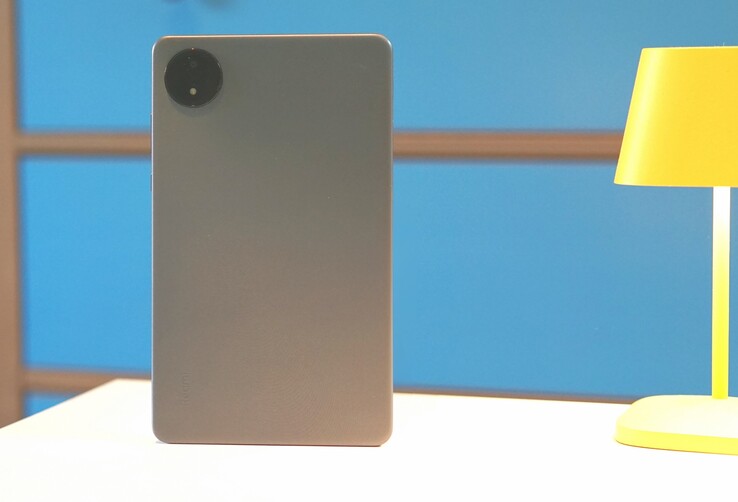




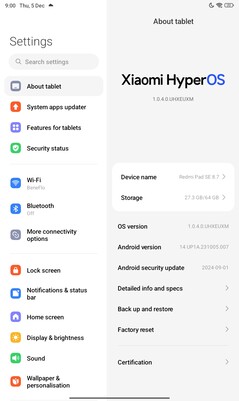
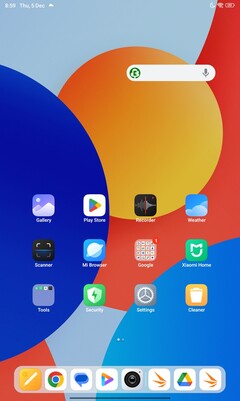
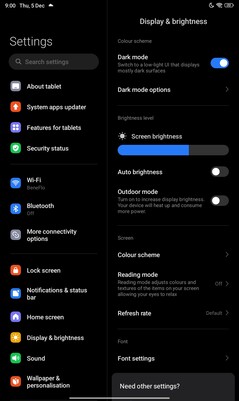


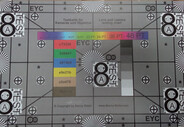



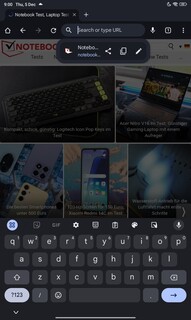
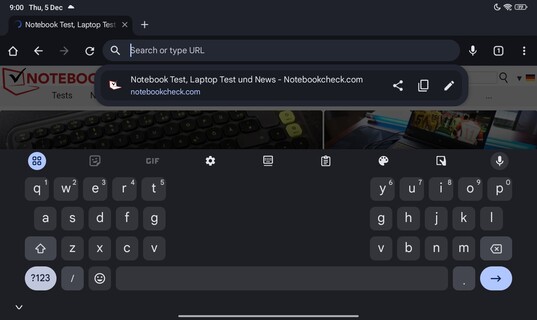
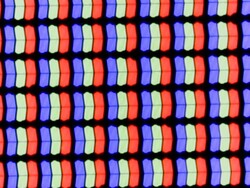
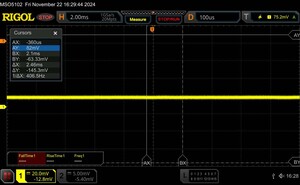
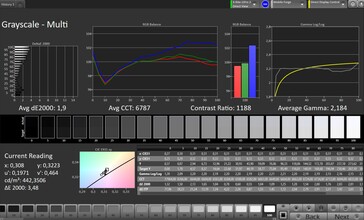
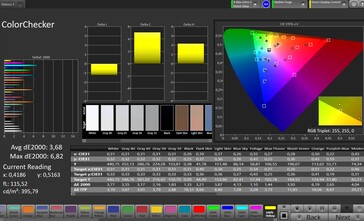
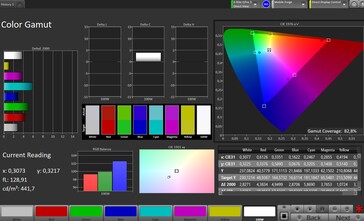
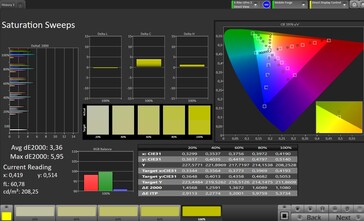
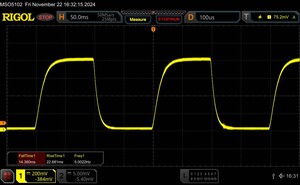

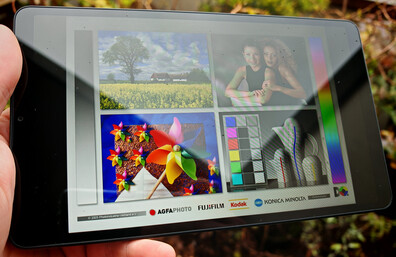

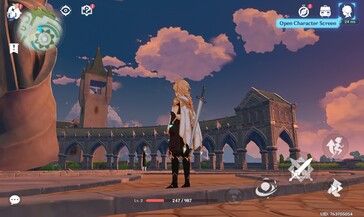
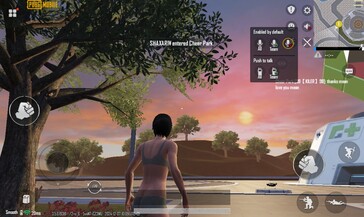
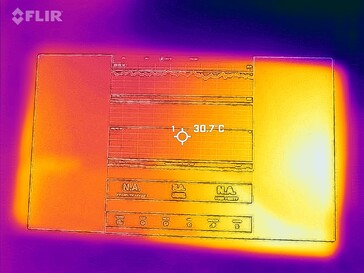
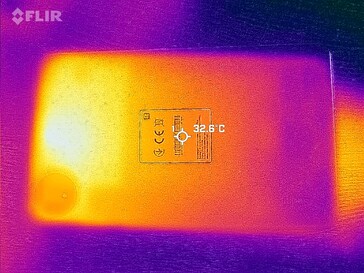
 Total Sustainability Score:
Total Sustainability Score: 
